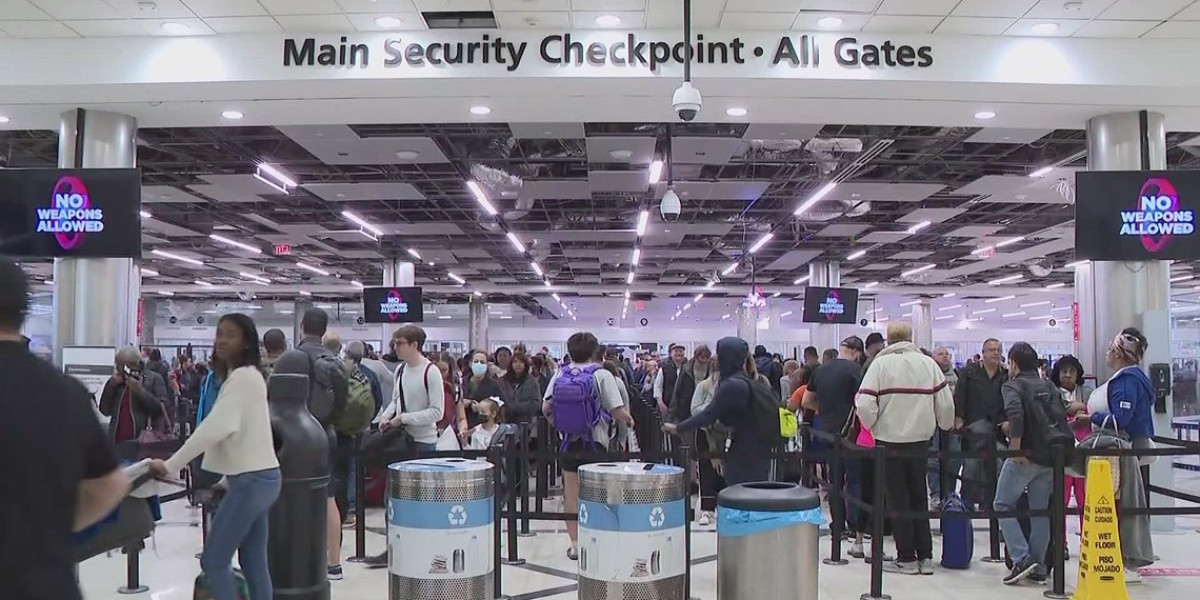Travelers passing through Atlanta’s bustling airport often find themselves caught in an unending stream of people, particularly at security. Understanding the challenges of atl tsa wait times can be the difference between a smooth takeoff and a missed flight. If you’re flying through Hartsfield-Jackson Atlanta International Airport, this guide will help you navigate the complexities of the TSA checkpoint with clarity and confidence.
A Closer Look at the World’s Busiest Airport
Hartsfield-Jackson Atlanta International Airport (ATL) is consistently ranked as one of the busiest airports globally. With over 100 million passengers passing through annually, the sheer volume puts a tremendous strain on its security checkpoints. Whether you’re a seasoned business traveler or a first-time flyer, preparing for the TSA line is a crucial part of your travel day.
Why Are ATL Security Lines So Long?
There are several reasons why TSA wait times at ATL can feel overwhelming. First, the layout of the airport, with multiple concourses and centralized checkpoints, tends to bottleneck passengers. Second, the mix of domestic and international flights creates unpredictable spikes in passenger volume throughout the day. Third, staffing shortages and seasonal surges often leave travelers facing longer lines than expected.
Understanding the Different Checkpoints at ATL
ATL has three primary TSA checkpoints: Main, North, and South.
Main Checkpoint: Open to all passengers, but typically the most crowded.
North Checkpoint: Usually reserved for Delta passengers and travelers with elite status.
South Checkpoint: Preferred by many because of TSA PreCheck and CLEAR access.
Knowing which one to use based on your airline and travel program memberships can save you valuable time.
The Importance of Timing Your Arrival
When it comes to tsa wait times at ATL, timing is everything. Early morning (between 5 a.m. and 8 a.m.) and late afternoon (3 p.m. to 7 p.m.) tend to be the worst periods for long lines. These hours coincide with rushes of outbound flights and returning business travelers. Conversely, mid-morning and early afternoon during weekdays are the sweet spots for smoother security experiences.
Planning Around Peak Travel Days
Traveling around holidays, weekends, or major events in Atlanta? Expect longer waits. Mondays and Fridays are especially hectic as business travelers cycle in and out of the city. Sundays are crowded with weekend travelers returning home. Avoid these days if possible, or arrive even earlier than usual to account for the added volume.
Tips for Cutting Down Your Time in Line
Preparation can drastically reduce your wait time. Here are some TSA-friendly tips:
Use TSA PreCheck or CLEAR: These programs expedite the screening process.
Keep travel documents easily accessible: Don’t fumble at the ID checkpoint.
Pack smart: Remove prohibited items before arriving at the airport.
Dress efficiently: Wear slip-on shoes and avoid excessive jewelry or belts.
Little changes like these can shave 10–20 minutes off your security process.
Real-Time Tools to Track TSA Waits
Technology is your friend when flying through ATL. The atl tsa wait times tracker offers real-time updates on delays and estimated security line durations. The MyTSA mobile app is also useful, allowing you to check historical wait data and crowd-sourced reports. Use these tools before you leave home to plan your airport arrival more effectively.
The Role of TSA PreCheck and CLEAR
Both TSA PreCheck and CLEAR provide significant benefits for frequent flyers. PreCheck allows travelers to pass through security without removing shoes, belts, laptops, or liquids. CLEAR uses biometric verification to skip the ID check, combining perfectly with PreCheck to create a streamlined experience. While there’s a cost associated, many credit cards and travel programs offer rebates, making it a worthwhile investment.
Flying Internationally from ATL
International flights require more time—not just due to longer check-ins, but because of additional security and documentation checks. If you're flying internationally from ATL, plan to arrive at least three hours early. Keep in mind that customs and passport control may also delay your passage through the terminal.
Traveling with Kids or in a Group? Start Earlier
Families and group travelers often experience delays due to additional belongings, special items like strollers or medical equipment, and the general pace of moving multiple people through security. If you're not traveling solo, consider adding at least 30 minutes to your planned arrival time.
The Impact of Ongoing Construction or Staffing Changes
Hartsfield-Jackson is constantly evolving. Renovations and staffing changes can cause certain lanes to close temporarily, increasing the burden on remaining checkpoints. Travelers during these times may see erratic changes in wait times from day to day, especially during unpredictable events like weather delays or system outages.
What If You’re Running Late?
Even with the best planning, things happen. If you arrive late and your flight is boarding soon, speak with an airline representative or TSA officer right away. In some situations, you may be allowed to move ahead in line, especially if your departure is within a tight window. However, this is not guaranteed, so always give yourself extra time as a buffer.
Don’t Forget About the Plane Train
One unique challenge at ATL is the Plane Train, a monorail-style tram system that connects all concourses. After clearing security, you may still need an additional 10–20 minutes to reach your gate depending on how far it is. Keep this in mind, especially during peak hours when trams can become crowded.
Common Mistakes That Add Time at Security
Here are a few common missteps that lead to longer waits at TSA checkpoints:
Forgetting to empty water bottles
Packing large electronics at the bottom of carry-ons
Wearing complicated footwear
Not having boarding passes ready
Trying to bring restricted items like aerosols or wrapped gifts
Avoid these pitfalls and you'll get through the line faster.
The Bottom Line: Beat the Lines with Smart Planning
Flying through ATL doesn’t have to be a stressful ordeal. While it's true that security waits can be long, a little research and preparation go a long way. From knowing your terminal and travel time to utilizing real-time tracking tools and trusted traveler programs, there are many ways to reduce the friction of air travel.








